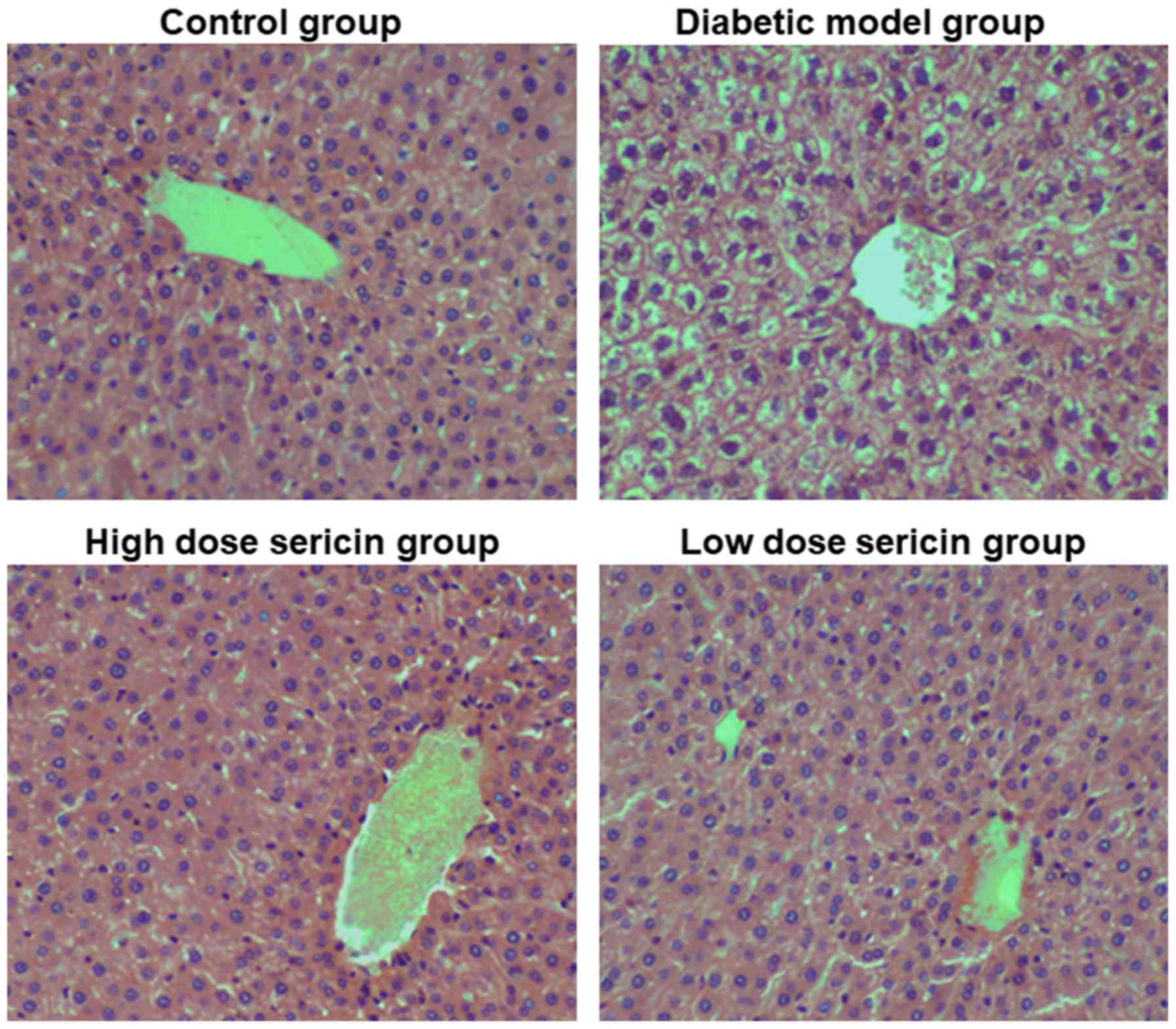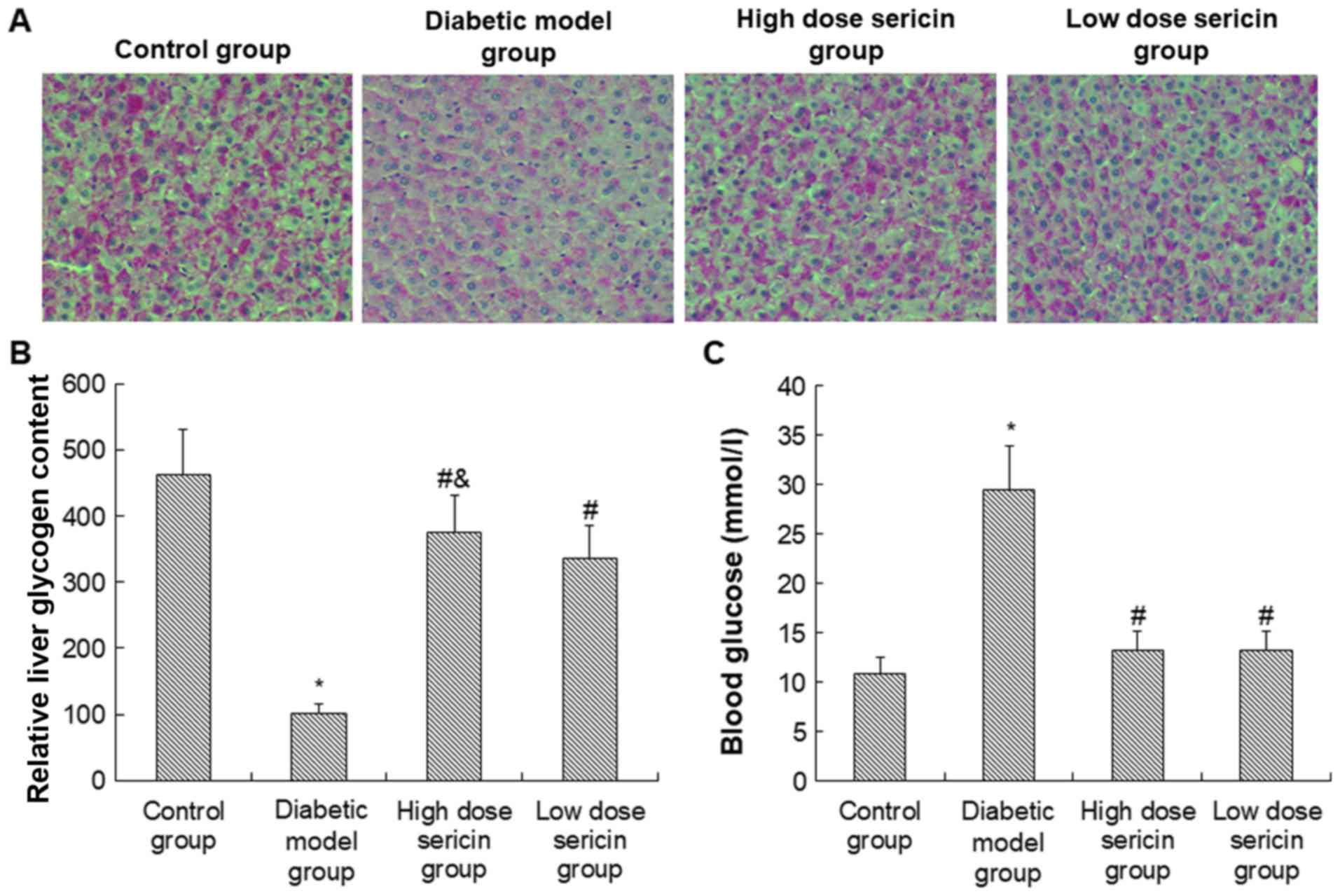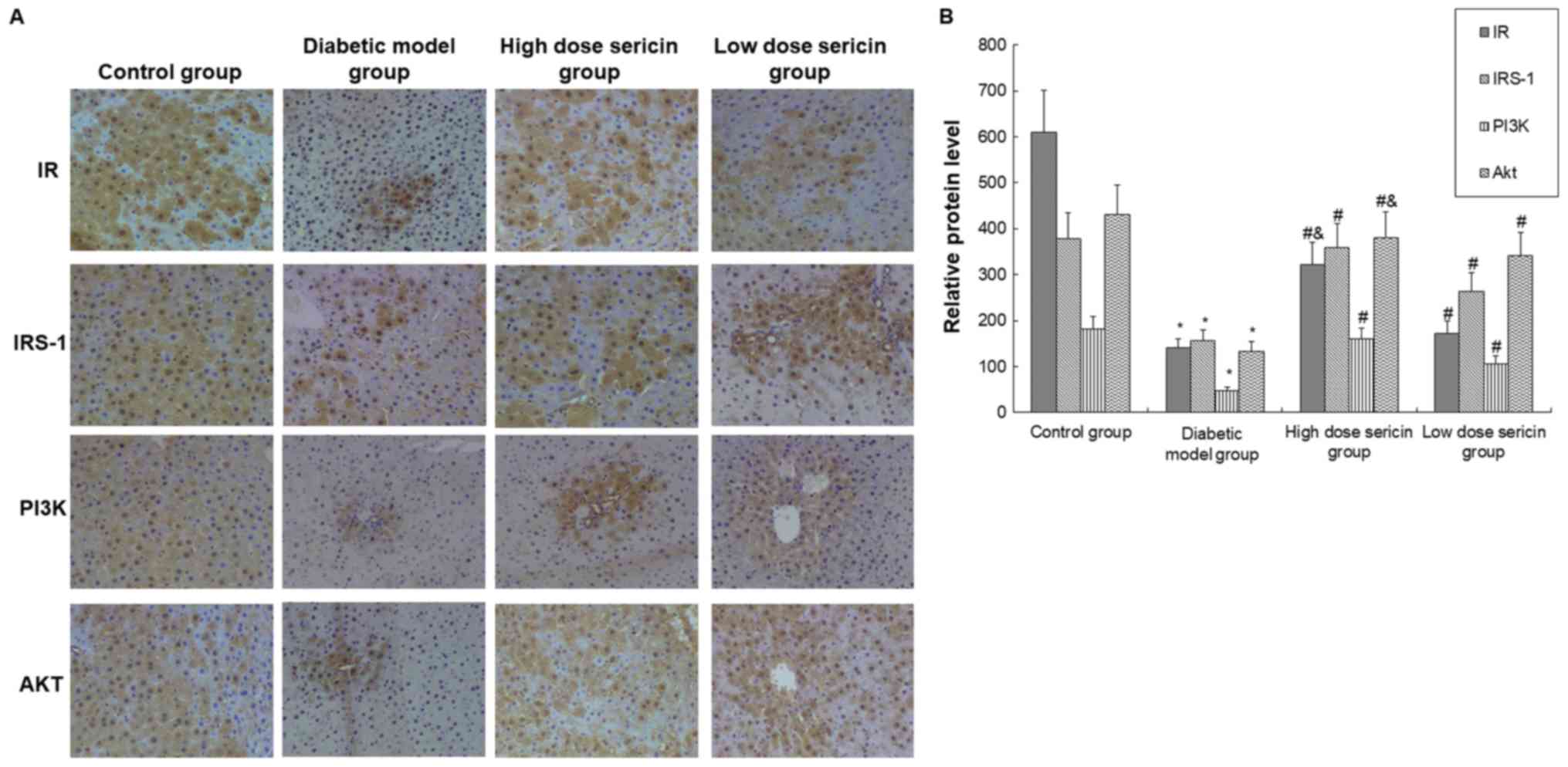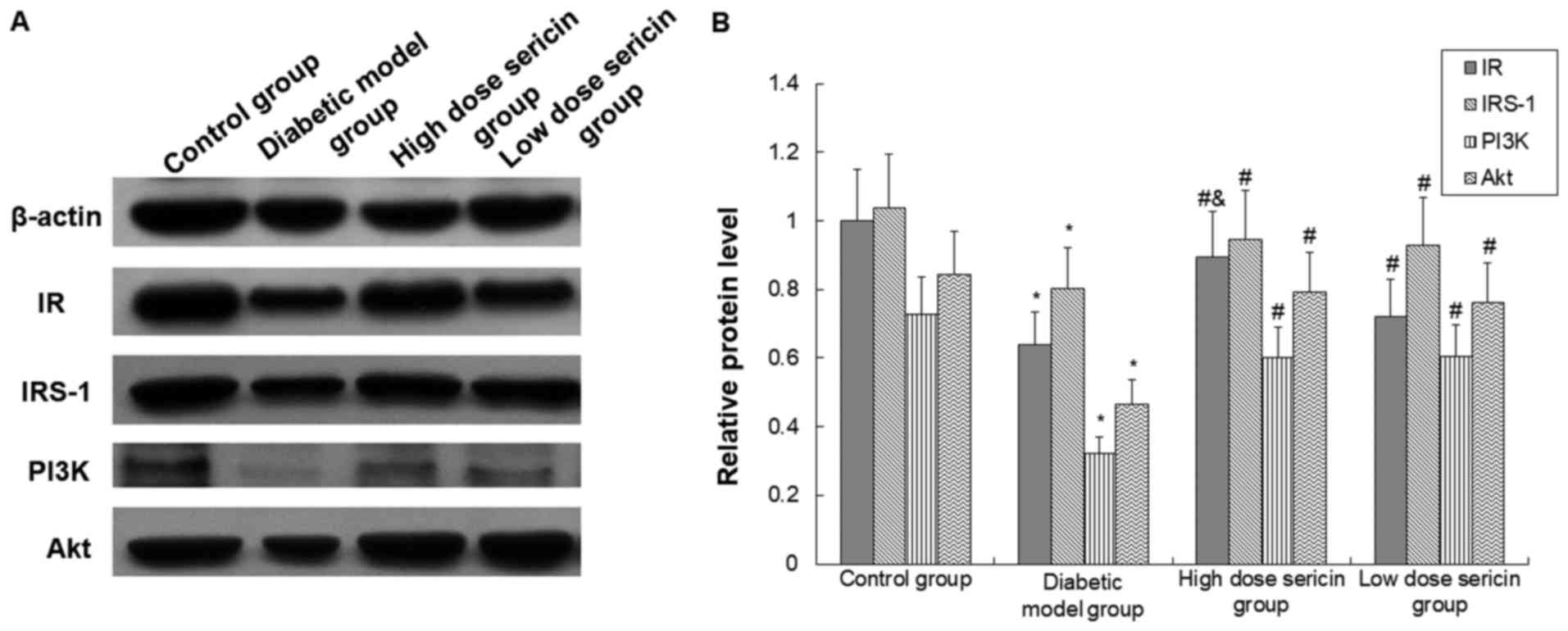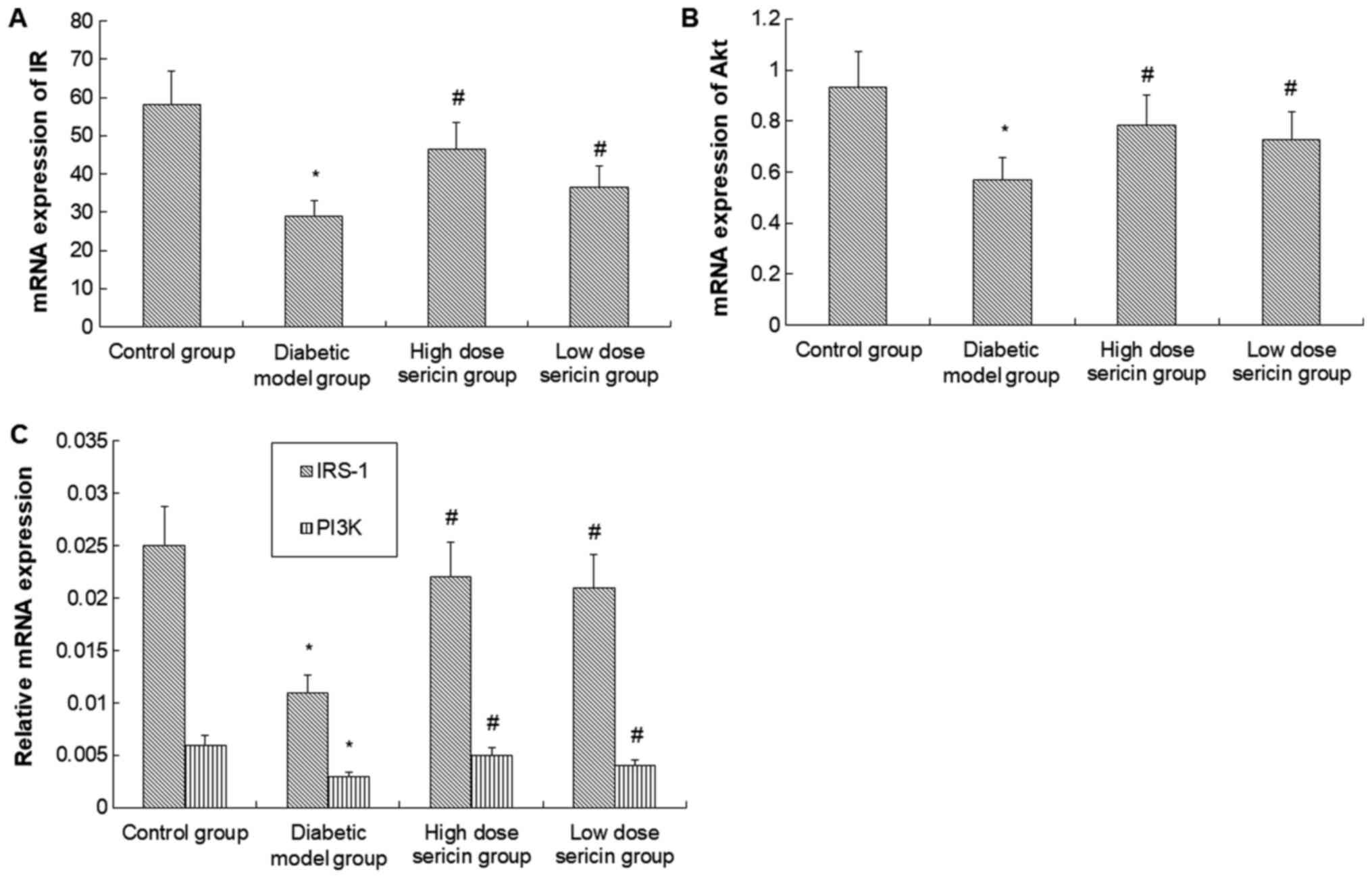|
1
|
Chattopadhyay T, Singh RR, Gupta S and
Surolia A: Bone morphogenetic protein-7 (BMP-7) augments insulin
sensitivity in mice with type II diabetes mellitus by potentiating
PI3K/AKT pathway. Biofactors. 43:195–209. 2017. View Article : Google Scholar : PubMed/NCBI
|
|
2
|
Chaudhury A, Duvoor C, Reddy Dendi VS,
Kraleti S, Chada A, Ravilla R, Marco A, Shekhawat NS, Montales MT,
Kuriakose K, et al: Clinical review of antidiabetic drugs:
Implications for type 2 diabetes mellitus management. Front
Endocrinol (Lausanne). 8:62017.PubMed/NCBI
|
|
3
|
Horita S, Nakamura M, Suzuki M, Satoh N,
Suzuki A and Seki G: Selective insulin resistance in the kidney.
Biomed Res Int. 2016:58251702016. View Article : Google Scholar : PubMed/NCBI
|
|
4
|
Gao YF, Zhang MN, Wang TX, Wu TC, Ai RD
and Zhang ZS: Hypoglycemic effect of D-chiro-inositol in type 2
diabetes mellitus rats through the PI3K/Akt signaling pathway. Mol
Cell Endocrinol. 433:26–34. 2016. View Article : Google Scholar : PubMed/NCBI
|
|
5
|
Hou XL, Wang WQ, Shi CY, Tong Q and Fang
JG: Research progress in pharmacological effects of
dihydromyricelin. Chinese Traditional and Herbal Drugs. 46:603–609.
2015.
|
|
6
|
Gandhi GR, Jothi G, Antony PJ, Balakrishna
K, Paulraj MG, Ignacimuthu S, Stalin A and Al-Dhabi NA: Gallic acid
attenuates high-fat diet fed-streptozotocin-induced insulin
resistance via partial agonism of PPARgamma in experimental type 2
diabetic rats and enhances glucose uptake through translocation and
activation of GLUT4 in PI3K/p-Akt signaling pathway. Eur J
Pharmacol. 745:201–216. 2014. View Article : Google Scholar : PubMed/NCBI
|
|
7
|
Liu TY, Shi CX, Gao R, Sun HJ, Xiong XQ,
Ding L, Chen Q, Li YH, Wang JJ, Kang YM and Zhu GQ: Irisin inhibits
hepatic gluconeogenesis and increases glycogen synthesis via the
PI3K/Akt pathway in type 2 diabetic mice and hepatocytes. Clin Sci
(Lond). 129:839–850. 2015. View Article : Google Scholar : PubMed/NCBI
|
|
8
|
Chang S: Progress in studying the
relationship between PDK/Akt signal access and insulin resistance.
Zhong Yi Yao Dao Bao. 14:113–116. 2008.
|
|
9
|
Ahrén B, Masmiquel L, Kumar H, Sargin M,
Karsbøl JD, Jacobsen SH and Chow F: Efficacy and safety of
once-weekly semaglutide versus once-daily sitagliptin as an add-on
to metformin, thiazolidinediones, or both, in patients with type 2
diabetes (SUSTAIN 2): A 56-week, double-blind, phase 3a, randomised
trial. Lancet Diabetes Endocrinol. 5:341–354. 2017. View Article : Google Scholar : PubMed/NCBI
|
|
10
|
Type 2 diabetes and metformin. First
choice for monotherapy: Weak evidence of efficacy but well-known
and acceptable adverse effects. Prescrire Int. 23:269–272.
2014.PubMed/NCBI
|
|
11
|
Chen H, Zhu LJ, Min SJ and Hu GL:
Structure, property and utilization of silk sericin. Journal of
Functional Polymers. 14:344–347. 2001.
|
|
12
|
Takasu Y, Yamada H, Tamura T, Sezutsu H,
Mita K and Tsubouchi K: Identification and characterization of a
novel sericin gene expressed in the anterior middle silk gland of
the silkworm Bombyx mori. Insect Biochem Mol Biol. 37:1234–1240.
2007. View Article : Google Scholar : PubMed/NCBI
|
|
13
|
Aramwit P, Siritientong T and Srichana T:
Potential applications of silk sericin, a natural protein from
textile industry by-products. Waste Manag Res. 30:217–224. 2012.
View Article : Google Scholar : PubMed/NCBI
|
|
14
|
Okazaki Y, Kakehi S, Xu Y, Tsujimoto K,
Sasaki M, Ogawa H and Kato N: Consumption of sericin reduces serum
lipids, ameliorates glucose tolerance and elevates serum
adiponectin in rats fed a high-fat diet. Biosci Biotechnol Biochem.
74:1534–1538. 2010. View Article : Google Scholar : PubMed/NCBI
|
|
15
|
Limpeanchob N, Trisat K, Duangjai A,
Tiyaboonchai W, Pongcharoen S and Sutheerawattananonda M: Sericin
reduces serum cholesterol in rats and cholesterol uptake into
Caco-2 cells. J Agric Food Chem. 58:12519–12522. 2010. View Article : Google Scholar : PubMed/NCBI
|
|
16
|
Chen Z, He Y, Song C, Dong Z, Su Z and Xue
J: Sericin can reduce hippocampal neuronal apoptosis by activating
the Akt signal transduction pathway in a rat model of diabetes
mellitus. Neural Regen Res. 7:197–201. 2012.PubMed/NCBI
|
|
17
|
Song CJ, Yang ZJ, Tang QF and Chen ZH:
Effects of sericin on the testicular growth hormone/insulin-like
growth factor-1 axis in a rat model of type 2 diabetes. Int J Clin
Exp Med. 8:10411–10419. 2015.PubMed/NCBI
|
|
18
|
Hao WJ, Li JY, Jiang H, Li YH, Shen Z, Hou
JJ, Xiong J and Li XR: Advantages of purified high-fat and
high-glucose diet. Wei Sheng Yan Jiu. 46:143–147. 2017.
|
|
19
|
Li N, Liu Q, Li XJ, Bai XH, Liu YY, Jin
ZY, Jing YX, Yan ZY and Chen JX: Establishment and evaluation of a
rat model of type 2 diabetes associated with depression. Zhongguo
Ying Yong Sheng Li Xue Za. 31:23–26. 2015.(In Chinese).
|
|
20
|
Santos EL, Dias BH, Andrade AC, Pascoal
AM, Vasconcelos Filho FE, Medeiros Fd and Guimarães SB: Effects of
acupuncture and electroacupuncture on estradiol-induced
inflammation and oxidative stress in health rodents. Acta Cir Bras.
28:582–588. 2013. View Article : Google Scholar : PubMed/NCBI
|
|
21
|
Silachev DN, Usatikova EA, Pevzner IB,
Zorova LD, Babenko VA, Gulyaev MV, Pirogov YA, Plotnikov EY and
Zorov DB: Effect of anesthetics on efficiency of remote ischemic
preconditioning. Biochemistry. Biokhimiia (Mosc). 82:1006–1016.
2017. View Article : Google Scholar
|
|
22
|
Vollmar B, Janata J, Yamauchi JI and
Menger MD: Attenuation of microvascular reperfusion injury in rat
pancreas transplantation by L-arginine. Transplantation.
67:950–955. 1999. View Article : Google Scholar : PubMed/NCBI
|
|
23
|
Kura RR, Kilari EK and Shaik M: Influence
of aprepitant on the pharmacodynamics and pharmacokinetics of
gliclazide in rats and rabbits. PeerJ. 6:e47982018. View Article : Google Scholar : PubMed/NCBI
|
|
24
|
Wang NN, Liu F, Xu X, Zhang SW, Nie R, Yin
DD, Liu GQ and Wang GJ: Establishment and preliminary application
of fluorescence quantitative RT-PCR detection method for tambus
virus. Zhong Guo Shou Yi Ke Xue. 45:15–19. 2015.
|
|
25
|
Chahardah-Cherik SM, Gheibizadeh MP,
Jahani SP and Cheraghian BP: The relationship between health
literacy and health promoting behaviors in patients with type 2
diabetes. Int J Commun Based Nurs Midwifery. 6:65–75. 2018.
|
|
26
|
Papier K, D'Este C, Bain C, Banwell C,
Seubsman S, Sleigh A and Jordan S: Consumption of sugar-sweetened
beverages and type 2 diabetes incidence in Thai adults: Results
from an 8-year prospective study. Nutr Diabetes. 7:e2832017.
View Article : Google Scholar : PubMed/NCBI
|
|
27
|
Whiting DR, Guariguata L, Weil C and Shaw
J: IDF diabetes atlas: Global estimates of the prevalence of
diabetes for 2011 and 2030. Diabetes Res Clin Pract. 94:311–321.
2011. View Article : Google Scholar : PubMed/NCBI
|
|
28
|
Gautam S and Banerjee M: The macrophage
Ox-LDL receptor, CD36 and its association with type II diabetes
mellitus. Mol Genet Metab. 102:389–398. 2011. View Article : Google Scholar : PubMed/NCBI
|
|
29
|
Hu X, Wang S, Xu J, Wang DB, Chen Y and
Yang GZ: Triterpenoid saponins from Stauntonia chinensis ameliorate
insulin resistance via the AMP-activated protein kinase and
IR/IRS-1/PI3K/Akt pathways in insulin-resistant HepG2 cells. Int J
Mol Sci. 15:10446–10458. 2014. View Article : Google Scholar : PubMed/NCBI
|
|
30
|
Lu J, Chen LN and Ma X: PI3K/Akt signaling
pathway and insulin resistance related diseases. Guo Wai Yi Xue (Yi
Xue Di Li Fen Ce). 33:127–131. 2012.(In Chinese).
|
|
31
|
Winnay JN, Dirice E, Liew CW, Kulkarni RN
and Kahn CR: p85α deficiency protects β-cells from endoplasmic
reticulum stress-induced apoptosis. Proc Natl Acad Sci USA.
111:1192–1197. 2014. View Article : Google Scholar : PubMed/NCBI
|
|
32
|
Nelson VL, Jiang YP, Dickman KG, Ballou LM
and Lin RZ: Adipose tissue insulin resistance due to loss of PI3K
p110alpha leads to decreased energy expenditure and obesity. Am J
Physiol Endocrinol Metab. 306:E1205–E1216. 2014. View Article : Google Scholar : PubMed/NCBI
|
|
33
|
Qu W, Hao L, Chen Y and Zhou S: Effect of
chronic ethanol intake on insulin receptor, insulin receptor
subsrate-1 and phosphoinositide 3-kinase mRNA expression in
skeletal muscle of rats. Wei Sheng Yan Jiu. 36:172–175. 2007.(In
Chinese). PubMed/NCBI
|
|
34
|
Zhang Y, Hai J, Cao M, Zhang Y, Pei S,
Wang J and Zhang Q: Silibinin ameliorates steatosis and insulin
resistance during non-alcoholic fatty liver disease development
partly through targeting IRS-1/PI3K/Akt pathway. Int
Immunopharmacol. 17:714–720. 2013. View Article : Google Scholar : PubMed/NCBI
|
|
35
|
Wu QP, Xiao C, Yang XB and Zhang JM:
Hypoglycemic effects of components extracted from edible and
medicinal fungi and their mechanisms of action. Acta Edulis Fungi.
16:80–86. 2009.
|
|
36
|
Tao MX, Wang F, Liu J, Cheng GY and Jin
BQ: Hypoglycemic Effect of Pleurotus citrinopileats Polysaccharide.
Food Sci. 30:227–230. 2009.
|
|
37
|
Kuai M, Li Y, Sun X, Ma Z, Lin C, Jing Y,
Lu Y, Chen Q, Wu X, Kong X and Bian H: A novel formula
Sang-Tong-Jian improves glycometabolism and ameliorates insulin
resistance by activating PI3K/AKT pathway in type 2 diabetic KKAy
mice. Biomed Pharmacother. 84:1585–1594. 2016. View Article : Google Scholar : PubMed/NCBI
|
|
38
|
Bodmer M, Meier C, Krähenbühl S, Jick SS
and Meier CR: Metformin, sulfonylureas, or other antidiabetes drugs
and the risk of lactic acidosis or hypoglycemia: A nested
case-control analysis. Diabetes Care. 31:2086–2091. 2008.
View Article : Google Scholar : PubMed/NCBI
|
|
39
|
Li SZ: Compendium of Materia Medica.
Beijing: People's Health Publishing House; pp. 1–1052. 1985
|
|
40
|
Zhang HP, Zhu LJ and Hu H: Studies on the
properties of L-asparaginase immobilized on sericin protein powder.
Bulletin of Sericulture. 34:16–19. 2003.
|















